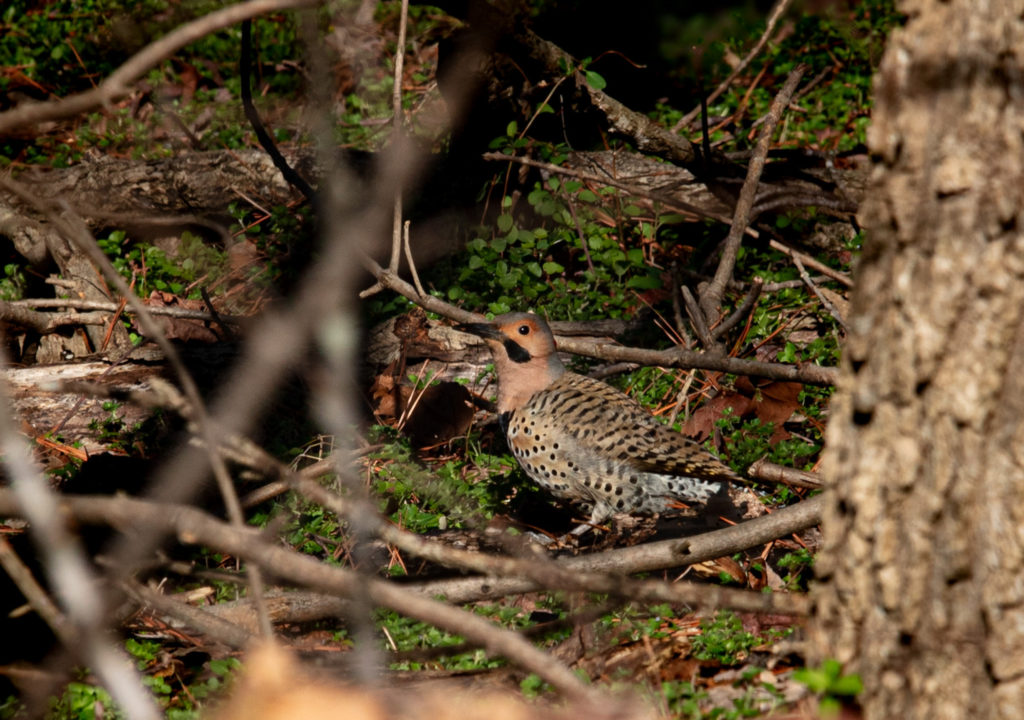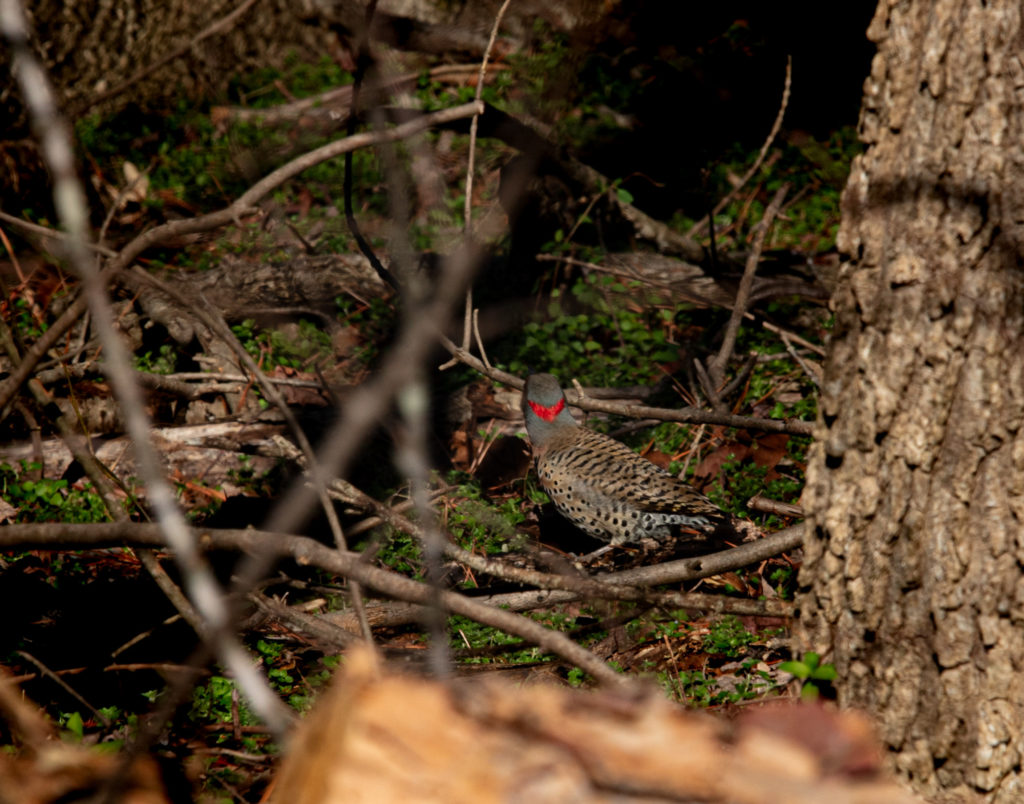By Sally Siko
North Carolina is home to 8 species of woodpeckers.
Here’s a collection of photos I’ve taken of each woodpecker species over the past year while birding in NC.
As you can see, most are relatively easy to tell apart depending on their plumage and size but there are other clues to their ID based on habitat preferences.
Here’s a rundown of all 8.

*Downy Woodpecker- smallest species found in mixed deciduous forests and our own backyards.

*Hairy Woodpecker – looks similar to the Downy but are around 9 inches long and weigh 3x as much as the Downy making them noticeably larger in size when comparing the two.
The Hairy Woodpeckers bill is as long as it’s slightly elongated head vs. the Downy who’s got a comparatively shorter bill size paired with a rounder head.
Although the range and habitat preferences of the Hairy Woodpecker generally overlap that of the Downy, the Hairy is a slightly shyer bird which spends more of its time in the deep woods vs. our backyards.

*Red-cockaded Woodpecker- rare and somewhat difficult to find, these guys look very similar to the Downy woodpecker, but lack the band of white going across its back and is only found in mature stands of old growth, long leaf pine forests.

*Pileated woodpecker- Crow sized, the largest woodpecker species found in NC with a bright red mohawk.

*Redheaded woodpecker- Even at a distance, that bright crimson head stands out from all the others.

*Yellow Bellied Sapsucker- found in areas with maple trees and mixed deciduous woods. Look for that yellow belly and red throat.

*Northern Flicker- that tan, black, white and red plumage combo makes these guys an unmistakable ID in the field. Look for them hunting at ant mounds at the bases of trees and on suburban lawns.

*Red-bellied woodpecker-found in backyards and broadleaf forests throughout the state, look for a bold red nape combined with a black and white barring pattern across their back.
Most of these woodpeckers call the Tarheel state home year round so it shouldn’t take too long for you to catch a look at all 8 species too.
🙂
Photos by @sally_siko of @bestlife_birding captured on my mighty mirrorless monster, the @canonusa #R5





